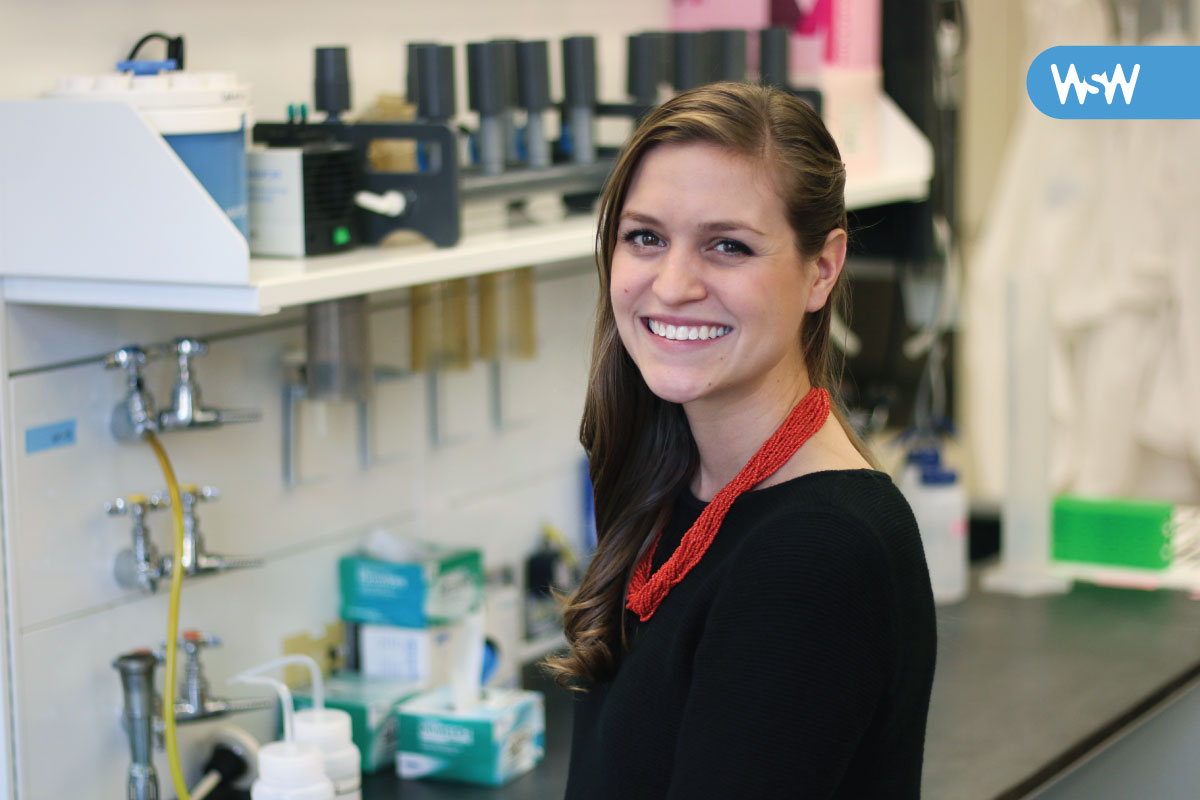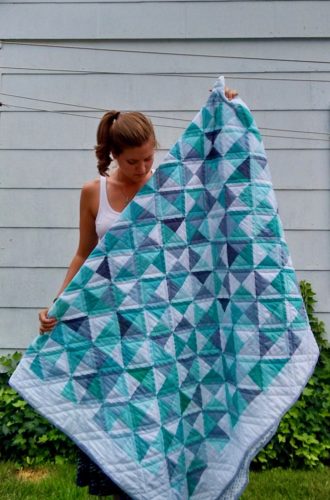When you were a child, what was your response to this question: “What do you want to be when you grow up?”
In fifth grade, I wanted to be an interior designer, probably the result of watching too many shows on TLC. As a scientist, I still love thinking about design and making my presentations as creative as possible. Science, of course, requires its own kind of creativity!
RESEARCH IN 5 WORDS:
“Antibiotic resistance on the move!”
Share the pivotal moment in your life that helped you choose your field of study.
The fall of my junior year of college I studied abroad in Quito, Ecuador. While on the plane somewhere above Miami, I spotted a field of brilliantly colored rectangles — turquoise, orange, and red. These turned out to be a field of salt ponds whose colors were derived from the bacteria and archaea that inhabited them. As a major microbiology nerd, I was fascinated by the thought of pigment molecules in single-celled organisms producing such a mesmerizing effect — something clicked about the scale of environmental microbiology and its connection to human and environmental health. The following semester in Quito brought challenging questions about conservation and sustainable development, and from there I decided to pursue a graduate degree in the intersection of environmental engineering and public health. UNC’s program was the perfect fit.
Tell us about a time you encountered a tricky problem. How did you handle it and what did you learn from it?
When I started at UNC, my research group was interested in adopting new methods to profile specific genes in bacterial communities in the environment. I did some digging in the literature and found a great bioinformatics tool. After a few weeks of trial and error, I got the pipeline up and running on UNC’s computing cluster and analyzed our first set of samples. We’ve since used that data to apply for additional grants, and I’m working on writing a tutorial to teach others in my lab how to use the pipeline. Overall, the experience instilled in me the importance of taking initiative — plus lots of detailed notes — and not being afraid to step into unfamiliar territory.
What are your passions outside of research?
Running, cooking and baking, and quilting. Running has been a constant in my life since middle school, but I appreciate it even more now as both a break from and parallel to research. I’ve run two marathons and will run my third at Boston this spring. For me, marathon training is strikingly similar to tackling a research question: You start with an end goal in mind and break down the weekly and even daily steps you’ll need to get there. While the daily grind can prove monotonous, the promise of hitting a goal time or getting a key piece of data keeps me going.
As for a creative outlet, I picked up sewing and quilting when I was 12 and continue to make a quilt or two each year. I love the rich history and stunning craftmanship of quilting, as well as making something totally unique and handmade to gift to family and friends.



